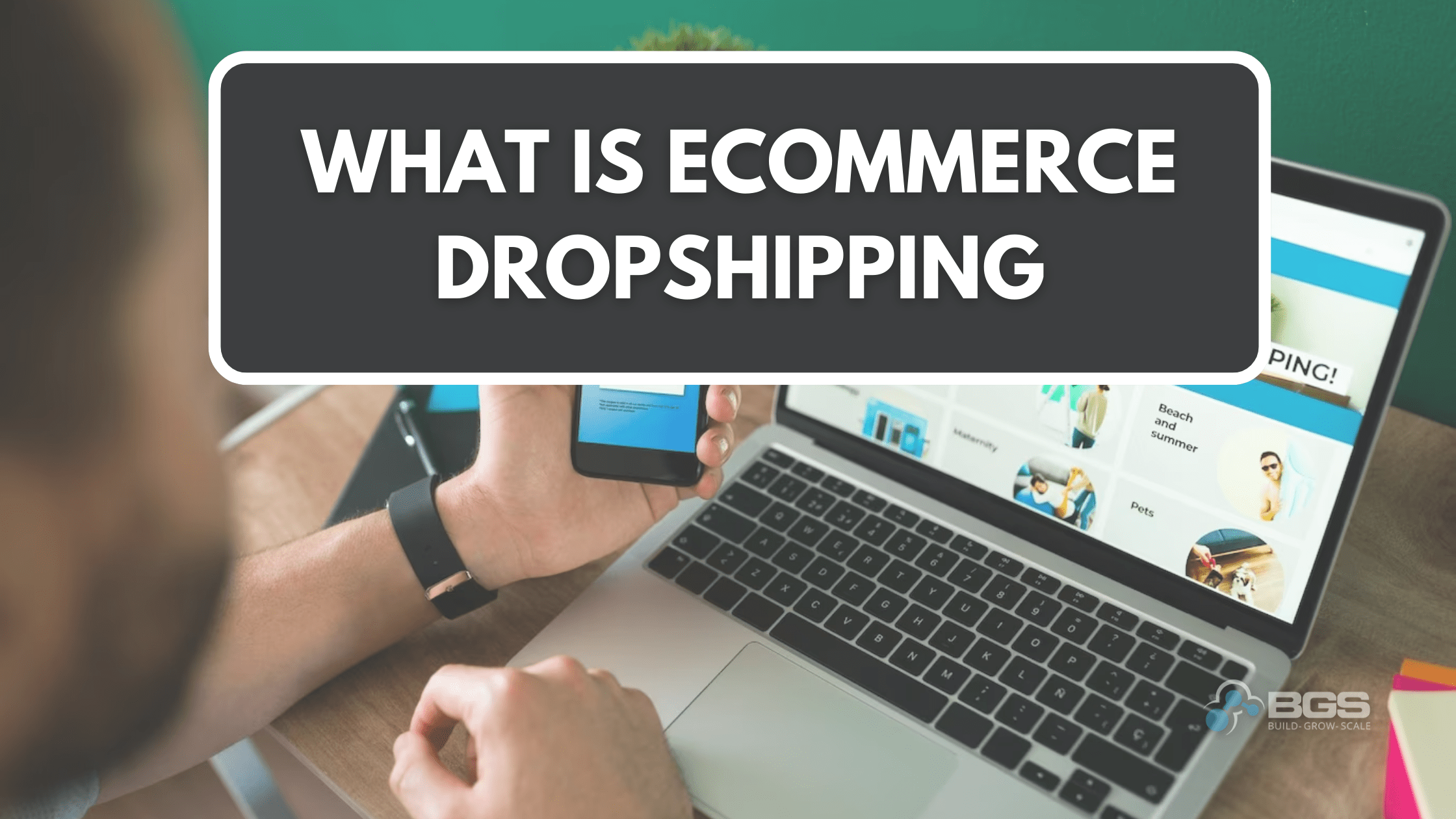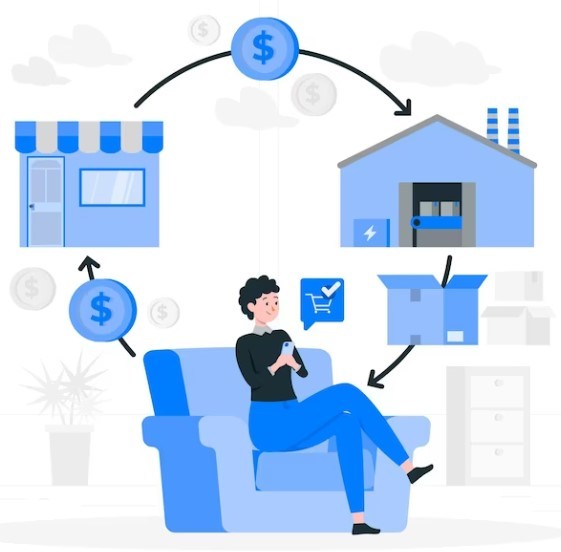What Is Ecommerce Dropshipping? 2023 Guide

Dominik Meiu | Jul 28, 2023
Reading Time: 6 minutesIn the ever-evolving world of ecommerce, you’ve likely heard the term ‘dropshipping’ thrown around. But what is ecommerce dropshipping exactly, and how can it be used to your advantage?
Whether you are an entrepreneur looking to start a new business or an established retailer seeking ways to grow and diversify, understanding the ins and outs of dropshipping can play a critical role in your strategy.
In this 2023 guide, we’ll dive into the world of ecommerce dropshipping. From explaining the basic concept and exploring its benefits and challenges to offering practical advice on building and marketing your dropshipping business, we’ve got you covered.
Keep reading to get a comprehensive understanding of this revolutionary business model and discover how it can transform your ecommerce ventures.
What is dropshipping?
Dropshipping’s a business model where store owners don’t keep the products they sell in stock; instead, when a product’s sold, they buy it from a third party and have it shipped directly to the customer. This process is what is referred to as ecommerce dropshipping. Essentially, you become the ‘middleman’ in the transaction, connecting the buyer and the supplier.
You don’t have to worry about inventory or shipping, which can reduce the risk and the overhead costs of starting a business. In this model, your primary role involves marketing and customer service – you present the available products in an appealing way and handle customer inquiries and complaints.
So, how does dropshipping work? You might be wondering. Well, let’s get dropshipping explained in more detail.
Let’s say you’re starting a dropshipping business. First, you set up an ecommerce store and list the products you want to sell. When a customer places an order, you forward that order to your supplier. The supplier then packs the product and ships it directly to the customer. Your profit is the difference between what the customer pays you and what you pay the supplier.
It’s a straightforward and potentially profitable way to enter the ecommerce domain without the need for substantial upfront investment.
How does ecommerce dropshipping work?
In the world of online retail, the process functions by having the seller receive customer orders and then directly forwarding those orders to a third-party supplier, who subsequently handles product fulfillment and shipping. This is what’s known as ecommerce dropshipping.
As a seller, you don’t have to worry about stocking inventory or dealing with the logistics of shipping. Instead, your role is to promote and sell the products on your online store, process orders, and manage customer service.
When a customer places an order on your site, you then order the product from your supplier, paying the wholesale price. The supplier then ships the product directly to your customer. Your profit is the difference between the retail price you charge your customers and the wholesale price you pay to your supplier.
Ecommerce dropshipping allows you to start an online business with minimal upfront investment, as you only purchase products after you’ve already secured a sale.
What are the benefits of ecommerce dropshipping?
Imagine the thrill of launching your very own online store without the worry of inventory, shipping costs, or large upfront investments – that’s the magic of dropshipping for you. This business model allows you to sell products directly from suppliers to customers, bypassing the traditional retail route.
You don’t have to worry about buying products in bulk, storing them, or even shipping them out. Instead, your focus can be solely on building your brand and marketing your products. You’re essentially the middleman, connecting the supplier and the customer and making a profit from the difference between the wholesale and retail price.
Apart from the low startup costs, dropshipping offers the benefit of flexibility. You’re not tied down to a physical location and can run your business from anywhere in the world as long as you have an internet connection.
This model also allows you to easily expand your product range since you don’t have to procure or store the items yourself. The risk is also significantly lower as you only purchase the product from the supplier after you’ve made a sale.
So, if you’re the type who wants to dip your toes into the world of ecommerce without the hefty financial commitment, dropshipping might just be the perfect route for you.
What are the challenges with ecommerce dropshipping?
While you’re enjoying the perks of your online store, remember that there can be a few bumps along the road to success. One of the main challenges with ecommerce dropshipping is inventory management. Since you’re not the one handling the stock, you’re dependent on your supplier’s inventory. If they run out of an item, you could end up with disappointed customers.
Similarly, shipping complexities can also pose challenges. Different suppliers have different shipping methods, and they might not always align with your customer’s expectations.
Secondly, another major challenge is quality control. Since the products are sent directly from the supplier to the customer, you don’t have the opportunity to inspect them for quality before they’re shipped. This could lead to customer dissatisfaction and returns if the product doesn’t meet the customer’s expectations.
Also, dropshipping often has lower profit margins than traditional retail. You’ll need to sell a lot more products to make a substantial income. Therefore, while ecommerce dropshipping can offer many benefits, it’s crucial to consider these challenges and plan accordingly.
How to build an ecommerce dropshipping business
Ready to dive into the world of online retailing? Building your own dropship business can be a fun, rewarding, and potentially profitable venture.
The first step in the process is to choose a niche product category that fits your interests and has a relatively high demand in the market. This will ensure that you’re not only passionate about your business, but it also has the potential to generate good revenue.
After you’ve chosen your niche, you’ll need to find reliable suppliers who can provide you with quality products at competitive prices. There are various online platforms like AliExpress, Doba, and SaleHoo where you can easily find and connect with potential suppliers.
Once you’ve lined up your suppliers, it’s time to set up your ecommerce store. Platforms like Shopify, BigCommerce, or WooCommerce can make this task easier with their user-friendly interfaces and wide range of customizable templates. Remember, your website is the face of your business, so make sure it’s professional and appealing to your target audience.
After setting up your store, the next step is to list your products with compelling descriptions and high-quality images. Finally, you’ll need to implement a marketing strategy that includes SEO, social media marketing, and email marketing. This will help you attract customers to your site and boost your sales.
How to market your ecommerce dropshipping business
Marketing your online retail venture can feel like a mammoth task, but it’s absolutely essential if you’re looking to draw in customers and skyrocket your sales.
The first step is defining your target audience. Understand who they are, what they need, and how your products can solve their issues. Once you’ve identified your audience, you can customize your marketing strategy to resonate with them.
Use social media platforms like Facebook, Instagram, and Twitter to reach out to your audience. These platforms are also excellent for paid advertising due to their wide user base and advanced targeting options.
Next, consider email marketing – it’s a powerful tool that can help you connect with your audience on a more personal level. Create an email list and send out newsletters, product updates, or exclusive offers.
You can also use content marketing to your advantage. Start a blog, create engaging videos, or design infographics that provide value to your audience while subtly promoting your products.
Remember, consistency is key in marketing. So, keep your brand message clear across all platforms and ensure you’re regularly updating your content and interacting with your audience.
Final Thoughts
So, you’ve explored the world of ecommerce and learned about what is ecommerce dropshipping. It’s not without its challenges, but the benefits surely make it an attractive option.
You’ve got a roadmap now to set up and market your own business. Remember, it’s all about finding the right products, targeting the right customers, and promoting your store effectively.
With persistence and dedication, you’re well on your way to establishing a successful ecommerce dropshipping business.
Frequently Asked Questions
Ecommerce dropshipping is a business model where online retailers don’t need to have physical inventory of the products they sell. Instead, they partner with a dropshipping supplier who fulfills the orders on their behalf when a customer places an order.
Some top ecommerce platforms for dropshipping include Shopify, WooCommerce, and BigCommerce. Each platform offers unique features that can cater to your specific needs and help streamline your dropshipping business.
Avoiding common mistakes in ecommerce dropshipping includes not verifying suppliers’ credibility, ignoring customer service, and neglecting product quality. Also, don’t underestimate the importance of a well-designed website and effective marketing strategies.
Absolutely, you can start an ecommerce dropshipping business with no experience. You’ll need to research, learn, and adapt diligently. It’s a process with a learning curve, but your determination can make it possible.
Yes, there are specific laws and regulations related to ecommerce dropshipping. You’ll need to comply with consumer protection laws, privacy policies, and tax regulations. However, these can vary greatly depending on your location and where you’re shipping to.
In a dropshipping model, you don’t handle customer service directly. Instead, your supplier does. They address product queries, handle returns, and deal with complaints. Your role is to ensure they provide quality service.



Table of Contents
What is dropshipping?How does ecommerce dropshipping work?What are the benefits of ecommerce dropshipping?What are the challenges with ecommerce dropshipping?How to build an ecommerce dropshipping businessHow to market your ecommerce dropshipping businessFinal ThoughtsFrequently Asked QuestionsTable of ContentsAbout the authorLeave a Comment Cancel ReplyAbout the author
Dominik Meiu
Dominik is a Revenue Optimization expert for Build Grow Scale. He loves the bright environment the team provides and the fact that he can have fun at work. The source of his incredible powers and critical game-changing ideas lay in his beautiful, luxurious, and youthful head of hair.




